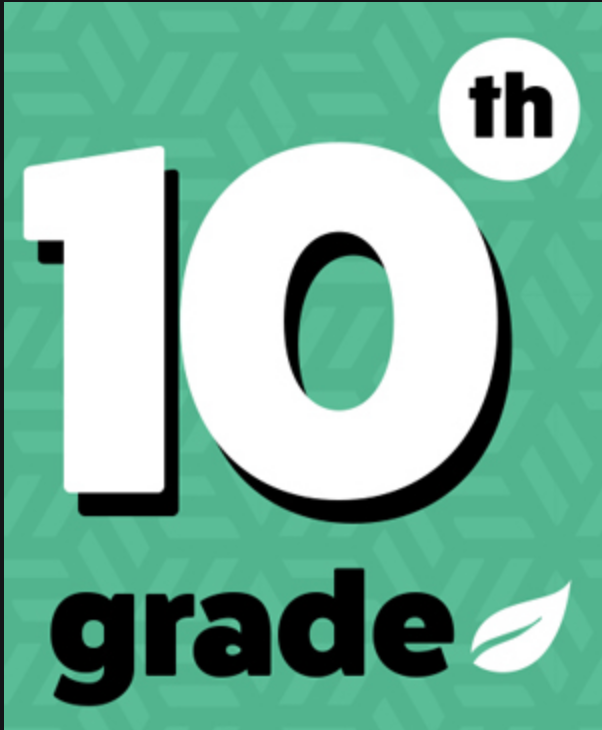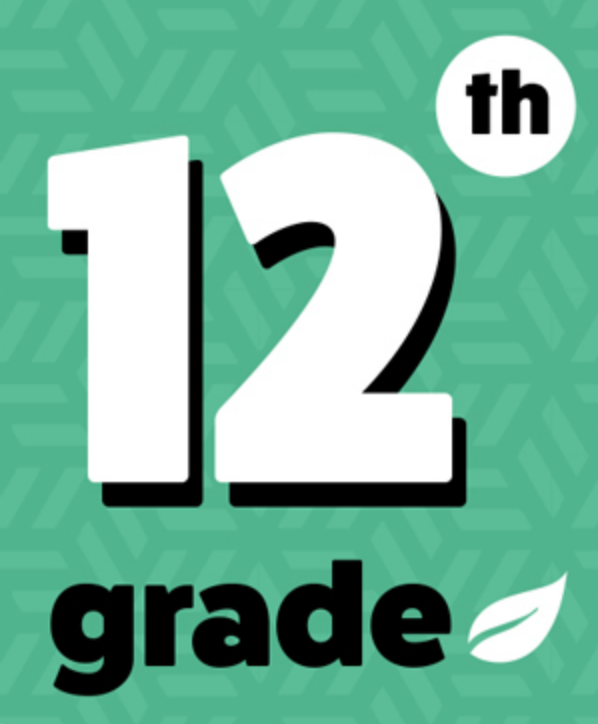During 11th grade, the college preparation process kicks into high gear. In addition to building their admission credentials, college-bound juniors need to focus on entrance exams and learn about colleges and student aid.
Thoughtful planning and organization (pay careful attention to schedules and deadlines) during the junior year will help you get a jump start and reduce senior year stress.
The list of 19 Junior Year items below will help you develop a college admissions timeline and action plan to keep you on track and help make you successful.
1 – Stay Focused on Academics
Admissions officers, guidance counselors, and college advisors agree that your academic record is an extremely important part of your college application. InLikeMe puts a challenging curriculum and strong grades at the top of the list. Think twice before dropping a foreign language or enrolling in an easier math class. A rigorous class schedule shows intellectual curiosity, a willingness to challenge yourself and that you are comfortable with hard work. There are compelling financial benefits, too. A strong academic record can lead to merit scholarships. Credits earned from dual enrollment, AP and IB classes, and CLEP exams can cut college costs.
2 – Be Involved and Build Your Resume
All competitive colleges seek a diversified and interesting student body. In past years, most successful applicants were well-rounded high-achievers. These days, there is a growing preference for involved, high-achievers who are also leaders with at least one compelling “hook”. A “hook” is an activity or interest pursued with depth and passion that sets the student apart from other applicants. If you haven’t done so already, junior year is not too late to become involved in activities and community service & experiences you enjoy with “college appeal”. Seek out opportunities to develop leadership roles. Depth, not breadth, of experience, is critical. These days, most colleges prefer to see fewer activities; ones that really interest you where you are involved in a significant way. Evidence of passion, leadership, initiative, commitment, and meaningful engagement is crucial. You may also consider an internship, research opportunity or part-time job in an area that interests you.
3 – Take the PSAT in the Fall of Junior Year
A strong score on the PSAT / NMSQT exam can lead to thousands of scholarship dollars. The experience of taking the exam will give you a sense of what to expect on the SAT. Taking the PSAT also gives you access to the College Board’s My College QuickStart and MyRoad which provide personalized feedback, practice and college planning based on your PSAT/NMSQT results.
4 – Set Up a College Admissions Email Account
If you don’t have one already, set up an email account to use for college admissions. Avoid user names that an admissions officer might find silly, inappropriate or immature. With easy web access, Gmail is a good choice. You’ll often be asked for an email address when you attend university presentations, college fairs and register to receive scholarship and college admissions information.
5 – Keep a College Admissions Notebook & Folder
Make a college notebook (a black and white composition notebook works well) for user accounts, passwords, notes, and other information. Place college admissions, student aid and scholarship information in your folder for easy reference along with information pertaining to high school awards, honors, community service hours, etc.
6 – Explore Your Interests, Potential Majors and Careers
You’re not alone if you are a high school student lacking clear direction about your future. Most young people can benefit from self-assessment tools to help define goals and explore college environments, academic majors and potential careers. InLikeMe provides useful advice along with information about self-assessment tools and career surveys. Family members, teachers, counselors, coaches, and friends can also be helpful. Seek out mentors who can answer questions and provide guidance.
7 – Meet With Your Guidance Counselor
Navigating the road to college can be a daunting experience. You can benefit from the support and advice of people you know and trust such as your Guidance Counselor or College Advisor. If you haven’t done so already, it’s a good time to schedule a meeting to map out a game plan and make sure you are on the right track. Confirm that you are on track to meet all graduation requirements. Ask about your class rank if your school provides rankings. Inquire about providing information for the counselor’s recommendation. Review your transcript to make sure everything is correct. Be sure to schedule follow-up appointments with your guidance counselor to keep your college application process moving forward efficiently. During the spring, schedule a conversation to discuss college and scholarship ideas. Have your parents join you when appropriate.
8 – Read, Write and Build Your Vocabulary
Most college students spend significant time reading and writing. Those with well-developed skills have a distinct advantage over less prepared classmates. Enhancing your skills during high school will not only help you perform better on college entrance exams, but it will also prepare you for success in college. InLikeMe suggests students regularly read challenging articles and editorials from the New York Times, Wall Street Journal and/or The Economist in addition to studying vocabulary lists and grammar.
Lynn’s Favorites:
- Official SAT Question of the Day from The College Board
- SparkNotes Test Prep and 250 Most Difficult SAT Words
- Berkeley Parents Network Vocabulary List
- Vocabulary Cartoons: SAT Word Power
- Essential SAT Vocabulary (flashcards) (College Test Preparation)
- Painless Grammar
- Word Power Made Easy
9 – Register and Prep for the SAT, ACT, and Subject Tests
Strong scores not only improve your chances of acceptance, they can also lead to significant scholarship money. The SAT and ACT are very different college entrance exams. Most colleges accept either (or both). It is not unusual for students to take the exams multiple times and increase their scores significantly with preparation. Students often take both the ACT and SAT for the first time in the winter of junior year. It is advantageous to start prepping several months before. SAT Subject Tests are required by some schools. Many students find it advantageous to take Subject Tests in May and June after completing the curriculum and while the material is still fresh in their minds.
Lynn’s Favorites:
- The Official SAT Study Guide, 2nd edition
- The Real ACT (CD) 3rd Edition (Real Act Prep Guide)
- Dr. John Chung’s SAT Math
- Number2.com Question of the Day
- Official SAT Question of the Day from The College Board
- Increase Your Score In 3 Minutes A Day: ACT Reading
- Increase Your Score in 3 Minutes a Day: SAT Essay
- Increase Your Score in 3 Minutes a Day: SAT Critical Reading
- Vocabulary Cartoons: SAT Word PowerEssential SAT Vocabulary (flashcards) (College Test Preparation)
10 – Attend College Nights, Fairs, Presentations & Information Sessions
Keep your eyes open for college presentations, fairs and meetings online and in your local area. Your school’s guidance office may post them. College Fairs (usually held in the spring and fall) are a quick and low-cost way (often free) to check out many schools (on the same day) and meet admissions representatives without traveling far from home.
11 – Research Colleges, Universities & Majors — Compile Your Preliminary List
You may have a clear image of your perfect-fit school or no sense at all. Giving thoughtful consideration to what is important (to you) in terms of academics, size, prestige, location, cost, campus, activities, athletics and recreation is an essential first step. Junior year is an ideal time to learn about schools and majors with the goal of compiling an initial college list (three categories: reach, match and likely) in the spring. InLikeMe’s Fifteen A+ Resources for Researching Colleges can help you quickly get up to speed about individual colleges, affordability and admissions requirements, and policies.
12 – Register Online for Colleges and Universities
Visit the website for each school you are considering and register for information. Request a brochure by mail, when available. Jot down user names and passwords in your college notebook.
13 – Get up to Speed on Financial Aid & Scholarships
A college education can be an extraordinary investment that opens doors to interesting and lucrative career opportunities. It can also be one of the largest investments you’ll make in your lifetime. Fortunately, there are many opportunities for financial assistance –- merit aid, scholarships, loans, grants, work-study — to make college more affordable. Sit down with your parents or guardian to talk about your college finances, eligibility for need-based student aid, and how much your family may be able to contribute. Learn the vernacular: FAFSA, EFC, CSS PROFILE, Financial Aid Calculator. Know the difference between need-based aid and merit-based aid, and the difference between grants (e.g. scholarships, free money) and loans that must be repaid.
14 – Start Drafting your Admissions Resume or “Brag Sheet”
Your College Admission Resume is a special resume that highlights your accomplishments during high school. It can be a tremendous asset when you fill out applications, meet with interviewers, ask for recommendations and apply for scholarships. InLikeMe’s post Composing your College Admission Resume will tell you how to organize your activities, awards, honors, community service, leadership positions, jobs & internships and present them in a compelling resume. Spring of junior year is a great time to inventory your accomplishments and put together your resume.
15 – Visit Colleges
If you are in the geographic area of a college that interests you, check it out. It’s best to visit when school is in session, but you can get a feel for a college almost any time. If you are planning a vacation or visiting relatives, think about nearby colleges that may interest you. If you can’t visit in person, you may be able to take a virtual tour online.
16 – Brainstorm College Application & Scholarship Essays
Most competitive colleges require at least one essay. Familiarize yourself with essay prompts from the Common Application and other schools that you are considering. While the prompts may change from year-to-year, thinking about essay topics and how to best portray yourself can help prevent a brain freeze when you sit down to write your application essays. Thinking ahead will also give you time to enhance your raw material (e.g. activities, leadership positions, summer jobs, internships, advanced courses, community service.)
17 – Get a Jump Start on Recommendations
Recommendations from your high school counselor and teacher(s) are required when you apply to many colleges and universities. Plan ahead. Consider whom to ask, and how they can support your candidacy. Approach teachers before the end of the junior year about writing a favorable recommendation for you. Some teachers are overwhelmed with requests and limit the number of students for whom they write recommendations.
18 – Review Your Online Persona
Examine your information on Facebook and/or other social networks. Consider updating or deleting content that might not be viewed favorably by college admissions officers.
19 – Use Your Summer Wisely
The summer between junior and senior year is the perfect time to enhance your resume by reaching beyond your comfort zone and pursuing activities that could lead to compelling application essays. It’s also an excellent time to research colleges and prep for entrance exams if you need to retake them.
Author: Lynn Radlauer Lubell is the Publisher of InLikeMe.com, and the Founder of Admission By Design, a College Consultancy, based in Boca Raton, Florida.

Lynn Radlauer Lubell, Publisher of InLikeMe.com and Founder of Admission By Design, an Educational Consultancy based in Boca Raton, Florida.



